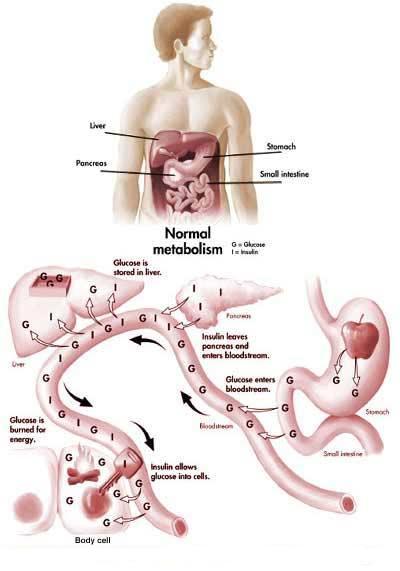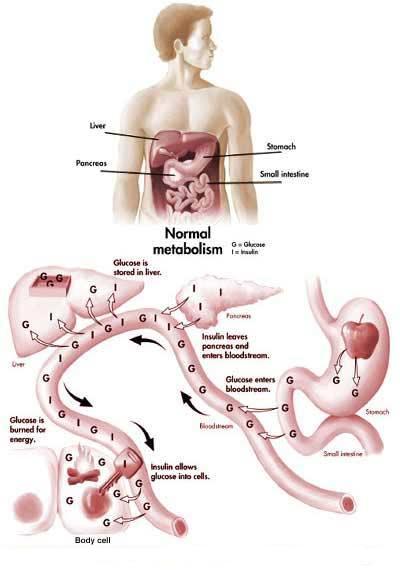Family
Hypoglycemia-Treat It And Beat It!

First off, let’s define what ‘hypoglycemia’ is. Hypoglycemia is an indicator of an existing health problem. It is a condition where your body responds by, quite literally, trying to put you on alert. It is typified by an abnormally-reduced amount of glucose in the blood. Hypoglycemia literally means ‘low blood-sugar’.

Treating hypoglycemia requires immediate steps to return your blood-sugar level to the normal range, which is about 70 to 100 milligrams per deciliter (mg/dL or mg/100mL).
What If Hypoglycemia Isn’t Treated?
If ignored, hypoglycemia can severely worsen; and serious complications can result, such as diabetic coma, which can be fatal. Other health-threatening conditions can emerge such as eye, nerve, heart and kidney complications.
How Is Hypoglycemia Diagnosed?
For those individuals treated for diabetes, a diagnosis of hypoglycemia can be made based on the presence of low blood-sugar, in and of itself. Otherwise, another diagnostic tool would be required, known as Whipple’s Triad. Whipple’s Triad is a collection of three indicators: 1) symptoms that are consistent with hypoglycemia 2) a low blood-sugar and 3) a reversal of these symptoms, once the blood-sugar improves.
What Symptoms Should Alert Me?
When hypoglycemia emerges, an array of biochemical processes takes place, and in turn, your body starts to consciously alert you that it needs food. As stated, the normal range of glucose in the blood is 70 to 100 mg/dL. Typically, people will develop hypoglycemic symptoms when blood-glucose levels reach the low to mid 60’s. Nervous system responses would include the following:
1. nervousness
2. unusual hunger
3. sweating
4. weakness
5. palpitations
6. trouble speaking
If certain types of sugar-elevating foods are not available, glucose levels will continue to drop. A blood glucose level of below 70mg/dL is low; and if the 50 mg/dL range is reached, normal brain function becomes compromised since the brain, itself; it is not able to receive adequate amounts of glucose. Immediate treatment is vital to prevent any possibility of coma or death.
What Can Be Done To Raise Blood Sugar?
It’s very important to take in a source of easily-absorbed sugar, ASAP, to manage hypoglycemia. Generally speaking, 15 grams of glucose should be taken in; and some very good choices that would meet that requirement would include soft drinks, soda or juice (1/2 can), table sugar (4 teaspoons), or four life-saver candies.
Once 15 grams of glucose have been taken, three other steps are vital:
1. assess the symptoms
2. check blood-glucose level
3. wait 10-15 minutes
If you are a care-giver of a hypoglycemic individual and if, after 10-15 minutes, there is no improvement, repeat the intake of 15 grams of glucose and repeat steps 1-3, above. This scenario of glucose-assess-check-wait can be repeated no more than three times, consecutively. If, after the third attempt, there is no improvement, the patient should be considered a non-responder to the intervention, and 911 should be called, immediately.
If a patient cannot or will not take sugar-food, an injection of glucagon should be administered by someone trained on how to give the injection. Glucagon is a hormone that is extremely fast-acting, and noticeable improvements for the patient should be apparent, within minutes. The effects of glucagon last for about 90 minutes.
When it comes to hypoglycemia, being proactive is the name of the game! Having fast-acting, easily-absorbed sugar-sources on hand, at all times, is a sure-fire way to be prepared. An additional proactive measure would be to wear an ID tag, stating your condition. It’s, also, wise to avoid situations that can exacerbate hypoglycemia; and this would include being aware of the effects of certain medications, some types of exercise and alcohol consumption.
Control Hypoglycemia So It Doesn’t Control You!
Miss Carlson loves to write and she covers the topics of insulin dependent diabetes and hypoglycemia.
-

 Tech11 years ago
Tech11 years agoCreating An e-Commerce Website
-

 Tech11 years ago
Tech11 years agoDesign Template Guidelines For Mobile Apps
-

 Business6 years ago
Business6 years agoWhat Is AdsSupply? A Comprehensive Review
-

 Business10 years ago
Business10 years agoThe Key Types Of Brochure Printing Services
-

 Tech8 years ago
Tech8 years agoWhen To Send Your Bulk Messages?
-

 Tech5 years ago
Tech5 years ago5 Link Building Strategies You Can Apply For Local SEO
-

 Law5 years ago
Law5 years agoHow Can A Divorce Lawyer Help You Get Through Divorce?
-

 Home Improvement6 years ago
Home Improvement6 years agoHоw tо Kеер Antѕ Out оf Yоur Kitсhеn































